 By Pepper Parr
By Pepper Parr
September 11, 2014
BURLINGTON, ON.
Everyone knows what happened – a lot of rain came down and the pipes underground couldn`t handle it – which is true.
But there is more to the story than that – and understanding the more is, what will get the city and the Region to the point where they can figure out what they have to do to handle the next big storm. Everyone on this file seems to have assumed that we have not seen our last big rain storm.
City staff prepared an elaborate presentation that set out the full picture – and as ugly as it was – it is a look at what we might be facing for the next 50 years.
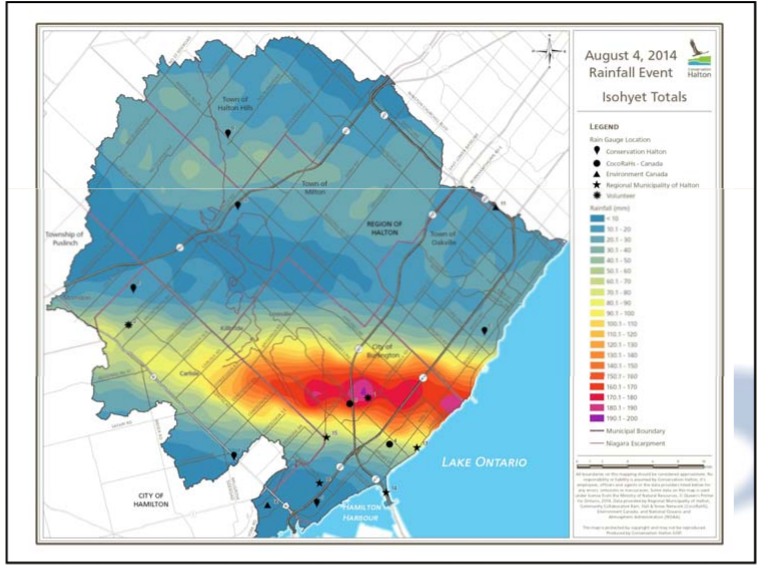
Weather Network map of the part of Burlington where all the rain fell. The rain came over the city in three waves.
The rainfall began to approach the city from across the lake at around 1:00 pm and was the first of what is reported to have been three different rain storms.
The 1:00 pm storm was followed by another at 4:00 pm and a final blow at 9:00 pm; the storms basically followed one another.
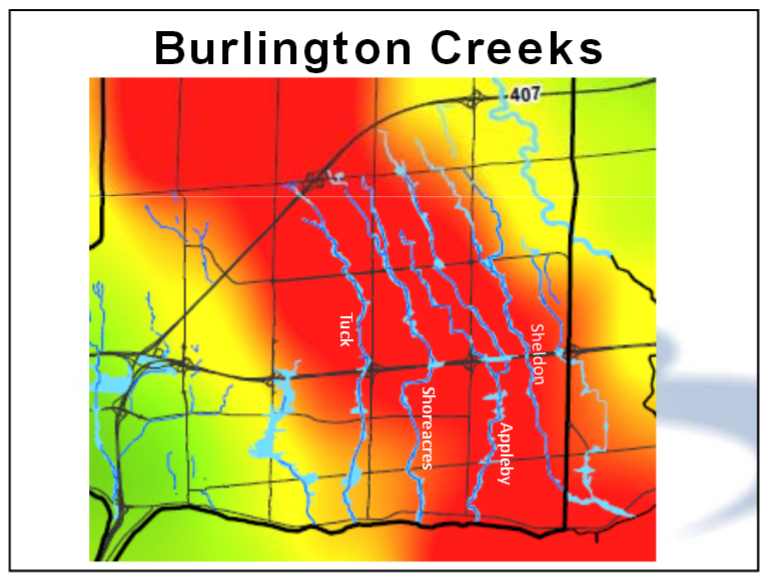
The 191 mm of rain worked its way into the creeks and roared into the city – heading for a storm water system that couldn’t deal with the volume.
As the rain blew in off the lake and approached the Escarpment the water made its way to the extensive creek structure that drains into Lake Ontario
Members of city council, who are all now in full election mode, tell people that we were not equipped to handle a storm of this size.
The city has creeks, storm sewers, culverts, catch basins, storm ponds, roads and swales to handle large sudden amounts of water. Unfortunately for all of us – we have let the swales and the creeks get away from their intended use and, when we needed them, – they didn`t do the job they were supposed to do for us.
Who is to blame for this – because there are a lot of people in this city who want to blame someone? Ward 5 Councillor Sharman held a meeting at the Pineland Baptist Church that he wanted to characterize as a private meeting. Sharman appears to have an understanding of what the problem was and is – but that didn`t wash all that well with the 30 some odd people who were in the church.
A decent grass roots community has evolved and they are gathering information – but don`t seem to have a sense as to what they want to do. Is there anything they can do?
Councillor Sharman commented frequently that the Region wasn`t anywhere near as forthcoming as they had to be with the homeowners – but he didn`t stress that he was running not just as a city Councillor but as a Regional Councillor as well.
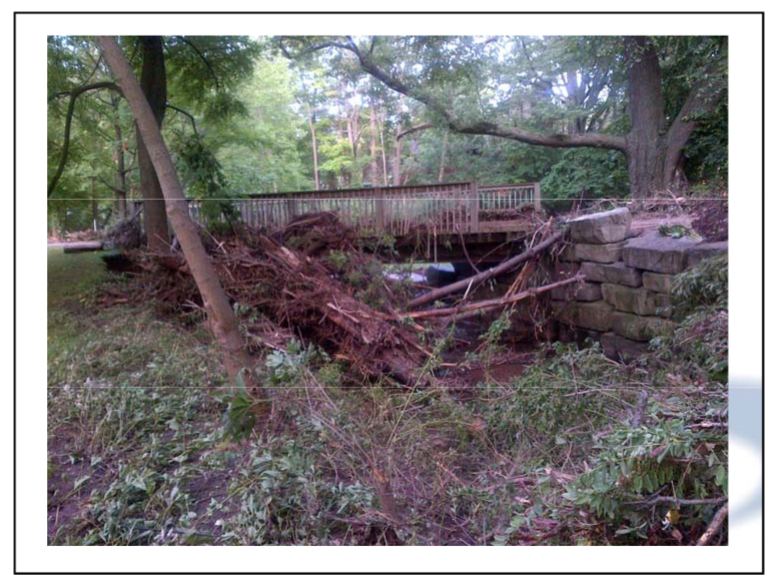
Creeks had far more vegetation than they were designed for – the Conservation Halton policy of letting the creek beds be as natural as possible – may have been a mistake. Those tree limbs got pushed and began to form dams that prevented the water from flowing into the lake. Water takes the path of least resistance – which turned out to be the streets of the city.
To his credit Sharman did manage to get the Region to agree to do a detailed study of the storm water problem at a July meeting of the Region; little did he know then that his ward was to be deluged with rain fall less than three weeks later.
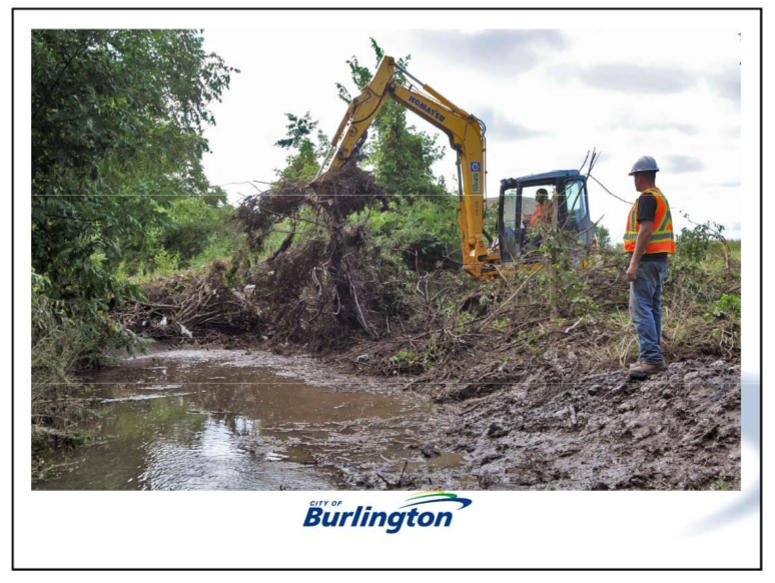
Contractors were brought in to clear the debris from the badly damaged creeks. Watch for this expense to get reflected in the budget that gets put forward in the New Year,
Sharman doesn`t have the political touch that Councillor Jack Dennison has and struggles with many of his constituents. Some of those constituents are flaming mad – one walks about with a thick file of papers urging people to think in terms of a class action suit.
These people are hurting – the financial burden to most of them is exceptionally difficult – and their homes cannot be sold. No one is going to want to live in those communities for some time.
How the city manages this crisis seems odd at times. City hall is focused on the infrastructure – they don’t seem to have anything for the citizens. Any help a citizen is going to get will come from their member of council.
What the city has done is outsourced the raising of funds to help people get at least some of the financial support many of them are going to need. The Burlington Community Foundation has taken on the task of raising funds that they hope will be matched by the province on a two for one basis under a provincial program called ODRAP –Ontario Disaster Relief and Assistance Program.
No one is certain just what the status of that application for help is at this point in time. When the BCF announced how they were going to manage the distribution of funds Mayor Goldring mentioned that this might take a long time – which doesn’t create much comfort or assurance for the people who need help.
The BCF has said they will begin to issue grants of up to $1000 for those people who are desperate and need some cash to cover the daily necessities. They are going to distribute funds even though they don`t know when or even if the province is going to match what the community raises on that two for one program.
Burlington is about to see just how slowly provincial bureaucrats move.
The city did see how fast people can get things done when they are committed, focused and motivated. The Samaritan’s Purse was in the city repairing homes the day after the storm.
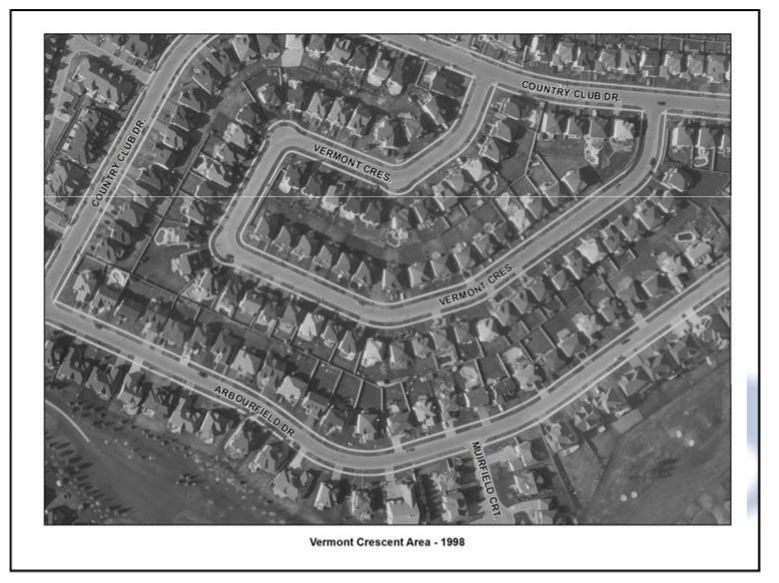
This is what Burlington looked like in the late 1990’s. Trees weren’t all that big and there were few swimming pools.
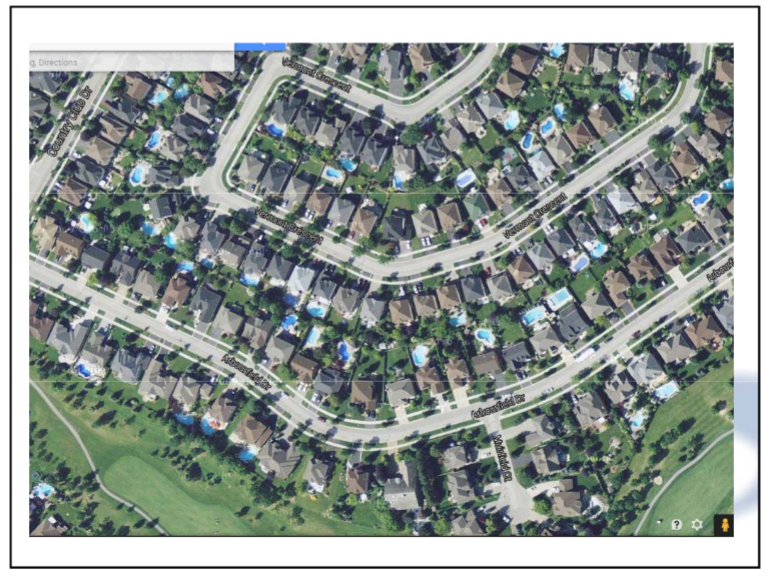
Same streetscape as above – see all those swimming pools – what did they do to the natural flow of rain water. We know now what they did.
During the briefing given at Council on Monday, city staff explained that the problem lies with changes that were made in the Ontario building code and how storm water pipes and sewage pipes were put in place.
Homes built prior to 1968 had to meet a code that called for pipes being put in one way – homes built after 1969 called for a different set up.
Much of the problem rests on weeping tiles and downspouts and where the water that passes through these two parts of a house actually goes.
City staff talked of the “new norm” and how we can prepare for that change. That new norm has been around for more than a decade – In Peterborough there was 193mm of rain on July 15th, 2004. Hamilton got 110mm on July 26th of 2009. Thunder Bay got 91 mm on May 28, 2012.
Peterborough didn’t get a dime from the provincial government – which does not bode well for Burlington’s chances of getting all that much from the provinces ODRAP program. Not much has been heard from MP Ted McMeekin who represents Flamborough just to the west of us. No one is sure that he is at his desk all that much.
The city activated its Emergency Operations Centre (EOC) at 9:00pm on August 4th. Roads and Parks Maintenance people responded to 103 calls and the city called former city general manager Kim Phillips, who had retired a month earlier, back to city hall to help out. Both the city manager and the Mayor were out of the city and didn’t get back until the following day.
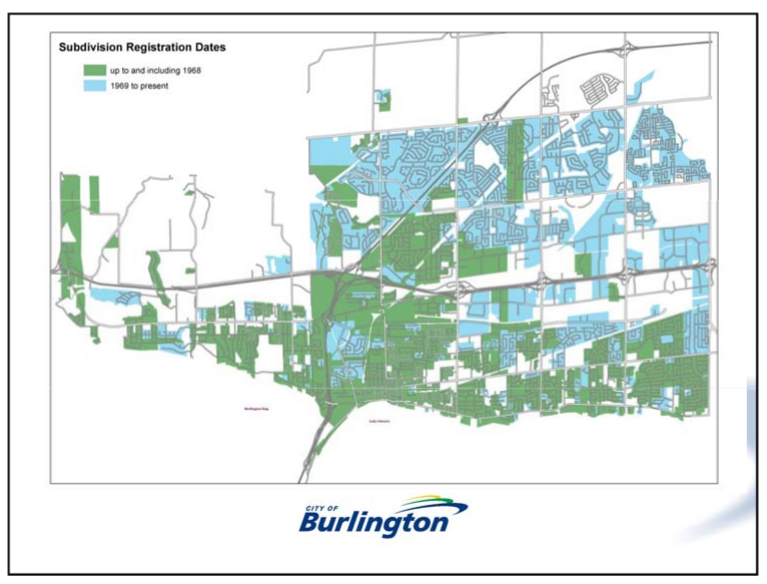
The colours tell the story. The older sub-divisions adhered to a different building code. There is a direct correlation between the older subdivisions and the flooding.
Scott Stewart, City general manager for Development and Infrastructure, was left to handle everything on his own. Interim city manager Pat Moyle referred to Stewart as the “man of action” which he certainly was on this occasion. Stewart lost out to Jeff Fielding when Burlington went looking for a new city manger three years ago. Fielding thought the grass was greener in Calgary and he departed in month 26 of a 60 month contract. Many thought Stewart should have been made at least interim city manager then but because the Kim Phillips retirement was in the works, Council decided to bring in someone to oversee projects and add some stability to the senior management level.
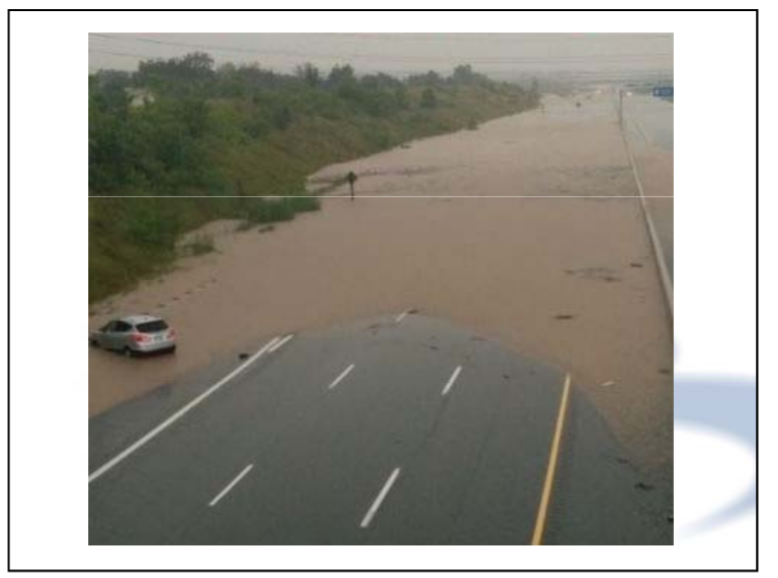
The 407 – engineered not that long ago – wasn’t able to handle the water that flowed into it. The water roared down the creeks – and found that the 407 was a barrier.
Stewart will in all likelihood apply for the job again when it is opened up – that will happen once the municipal election is a done deal. If Stewart doesn’t get the nod this time around – heck he might join Fielding in Calgary; the two of them worked very well in Burlington.
While city hall is doing as much as it can to take care of the infrastructure – much of the problem lays in the way we have managed that infrastructure. The creeks are the responsibility of the Conservation Authority that has a policy of letting the creeks be as natural as possible. That meant they didn’t get all that much done to them in terms of maintenance – which resulted in tree limbs being left in the creeks. Those tree limbs became dams which resulted in serious damage because the water flowing into the creeks couldn’t flow properly. That water backed up and flooded into streets.
 Downspouts that have been set up so that they drain into the storm water system added to the problem. The spouts could not handle the amount of water that was landing on roofs.
Downspouts that have been set up so that they drain into the storm water system added to the problem. The spouts could not handle the amount of water that was landing on roofs.
The Red Cross was out on the street going door to door 36 hours after the scope of the flood was evident; they made 10,970 calls and did 1,532 assessments and determined that 501 homes will require some form of financial aid. They reported that 271 home had partial or no insurance.
The average cost of restoring homes was set at $18,000 – if you can find a contractor. City general manager Scott Stewart commented that the market for contractors is “red hot” right now.
Red hot is a phrase that some 24 homes in this city will not be using – there are that many homes in one part of the city that may not have furnaces in place before December 1.
Earlier this week Calgary had its first snowfall.
Hard times may be ahead for some of our neighbours.



















The most recent posting on Ms. McMahon’s website was August 22;
“I have never felt more inspired than in the last few weeks, as I have worked — together with our municipal and regional colleagues — on behalf of the citizens in my community. I have also never felt so proud of our community as a result of the compassionate demonstrations of concern and support that our residents have demonstrated to their neighbours each and every day.”
Indeed, an update would be in order. I’m sure many would like to know how close to the fire Ms. McMahon is holding Ted McMeekin’s feet.
We may not have heard much from Ted McMeekin, Minister of Municipal Affairs and Housing and who represtents Ancaster-Dundas-Flamborough-Westdale.
But have we heard enough from Eleanor McMahon, MPP for the the riding directly affected by the storm, and has she done enough to enlist the aid from Ted McMeekin and Kathleen Wynne, and has she done enough to help all those affected by the storm?